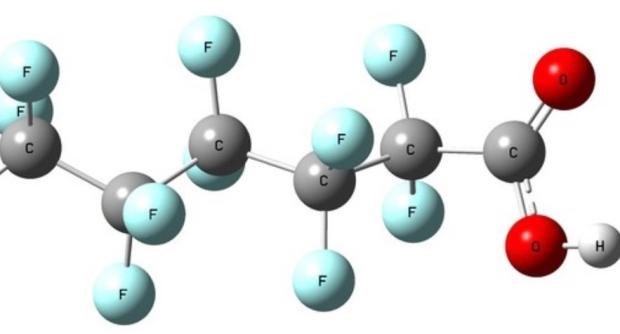Blog

EPA Proposes Listing Nine PFAS Compounds as RCRA Hazardous Constituents
On February 8, 2024, the United States Environmental Protection Agency (EPA) proposed changes to the Resource Conservation and Recovery Act (RCRA) that would list nine per- and polyfluoroalkyl substances (PFAS), their salts, and their structural isomers, in Title 40 of the Code of Federal Regulations Part 261 Appendix VIII.
The nine PFAS are:
- Perfluorooctanoic acid;
- Perfluorooctanesulfonic acid;
- Perfluorobutanesulfonic acid;
- Hexafluoropropylene oxide-dimer acid;
- Perfluorononanoic acid;
- Perfluorohexanesulfonic acid;
- Perfluorodecanoic acid;
- Perfluorohexanoic acid; and
- Perfluorobutanoic acid.
The EPA has evaluated these PFAS and determined that they meet RCRA’s hazardous constituent criteria as having toxic, carcinogenic, mutagenic, or teratogenic effects on humans and/or animals.
PFAS
PFAS, commonly known as “forever chemicals,” are a class of chemicals first developed in the 1940s. Since that time, PFAS have been widely used for a wide variety of industrial and commercial purposes, including firefighting foams, adhesives, and coatings for clothing and kitchenware. Due to their chemical composition, these substances do not easily degrade in the environment: in many instances they were designed to be heat and water resistant.
In 2016, PFAS were detected in the drinking water of Hoosick Falls, New York, sparking nation-spanning litigation over PFAS contamination. In June 2021, the governor of New Mexico petitioned the EPA to list PFAS as a hazardous constituent under RCRA. In October 2021, the EPA began the rulemaking process to list these substances as hazardous constituents under Title 40 of the Code of Federal Regulations Part 261 Appendix VIII. This was part of the EPA’s unveiling of broader the PFAS Strategic Roadmap, revealed on October 18, 2021.
The rule changes proposed on February 8, 2024, were preceded by a series of actions taken by the EPA regarding PFAS in recent months. In January 2024, the EPA finalized a rule preventing companies from starting or resuming production of over 300 inactive PFAS without EPA review; added 7 PFAS to the chemicals covered by the Toxics Release Inventory, mandating TRI reporting for those additional PFAS; and released three new methods for more accurately measuring PFAS in the environment. In October 2023, the EPA published a final rule in the Federal Register that requires reporting of all PFAS manufacturing and usage in the United States. Using the Toxic Substances Control Act (TSCA), the EPA created a new framework in June 2023 that ensures that new PFAS will be extensively studied and tested before they are approved for entry into commerce.
Further information on the actions the EPA is taking regarding PFAS can be found here
Who Would be Impacted by this Listing?
Entities that could be impacted by this listing include hazardous waste treatment, storage, and disposal facilities (TSDFs) with solid waste management units (SWMUs) that have released or could release any of the PFAS proposed to be listed as RCRA hazardous constituents. The EPA has already identified 1,740 of these facilities that could be subject to additional corrective action requirements pursuant to RCRA section 3004(u) and (v).
What Impacts Would this Rule Have?
The rule would primarily impact RCRA’s Corrective Action Program. This rule would facilitate additional corrective actions taken to address releases of specific PFAS listed as RCRA hazardous constituents. Under RCRA § 3004(u), permits issued to a TSDF after November 8, 1984, mandate corrective action for the release of any hazardous waste or hazardous constituents from a SWMU at the facility. Since 1990, the hazardous constituents referred to in RCRA § 3004(u) have been interpreted by the EPA to include those hazardous constituents listed in CFR Part 261 Appendix VIII. Therefore, the proposed rule listing these nine PFAS in Appendix VIII would expressly include them in RCRA facility assessments and, where necessary, ensure their investigation and cleanup through the corrective action process.
The EPA believes that this listing will have negligible effects on the other regulatory provisions of RCRA. Further, the EPA clarified that listing these PFAS as hazardous constituents does not also make them hazardous wastes. This rule would not impact publicly owned treatment works (POTWs)—unless the POTW is a hazardous waste TSDF—because only hazardous waste TSDFs are subject to RCRA § 3004(u). Similarly, solid waste disposal facilities would not likely be impacted by this change.
What Happens Next?
The EPA is accepting comments on this proposal now through April 8, 2024. Comments for the proposal, identified by the Docket ID No. EPA–HQ–OLEM–2023–0278, should be submitted via the Federal eRulemaking Portal here.
The full proposal can be found here.